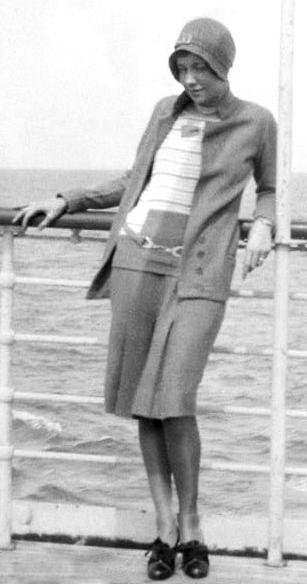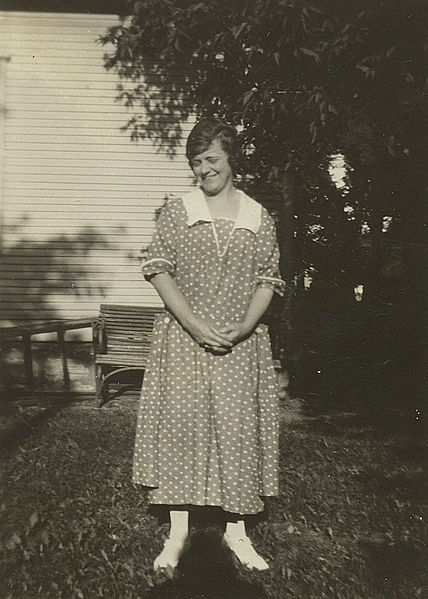Women

From Wikipedia
(GNU Free Documentation License)
During the 1920s, American women experienced a new sense of independence and became more interested in having careers of their own. They took to wearing simpler, less restricting clothes than previous generations of women did. Many of them cut their hair shorter in “bobs” and wore much shorter skirts. Because of their shorter hair, women tended to wear close-fitting hats, like cloches, and headbands. Women who didn't want to cut their hair short often wore their hair up at the back to give a look of short hair when people saw them from the front.
A classic image women of this era is the image of the "flapper", daring young women who pushed the limits of society’s expectations. Not all young women of this time were quite as daring as flappers who frequented speakeasies. Because human behavior varies, some women were more shy or conservative in their habits. In fact, most women in the 1920s were not as outrageous in their behavior as the classic portrayal of the flapper. However, if you want to look at the early childhoods of the women who became flappers, consider what life was like for women born in the early 1900s and the 1890s, who would have been in their teens through their 30s during the 1920s.

Family photograph provided by Infrogmation from Wikimedia Commons
(GNU Free Documentation License)
This video explains how women's fashions related to the events of the 1920s and what people in the 1920s considered to be the ideal body type for women. (Every era had a particular body type that they idealized, and the fashion fads of the time catered to that particular body type.) The narrator also discusses hair styles, makeup, and the relationship between clothing styles and other types of art and design in the 1920s.
Although the ideal figure for women's fashions for the 1920s was thin and straight with small busts, real life women's bodies came in as many different shapes as they ever did. Human forms do not change with the fashion of the decade, and women of the 1920s grappled with the same problem that women of other decades also pondered: how to dress more or less in fashion when the fashions of the day were not created with their body types in mind. This article explains what average and plus-sized women (often called "stout") would wear in the 1920s. Because 1920s fashions tended to focus on straight lines and dropped waists, women could use the straight lines to disguise larger figures and curves. Adding longer, flared, or tiered skirts and sleeves in interesting shapes and embellishments would also draw attention away from their waistlines. Loose casual clothing, such as unbutton cardigan sweaters, was also popular. Some companies, such as Lane Byrant (which began in 1904 and still exists today) specifically catered to plus-sized women and maternity wear, making considerable profit from their offerings. There was plenty of demand.
Among the women making careers for themselves and changes in society during the 1920s:
- Marie Luhring - She became the first female automotive engineer in America in 1920.
- Edith Wharton - The first American woman to win a Pulitzer Prize for Literature in 1921.
- Margaret Gorman - She became the first "Miss America" in 1921.
- Rebecca Latimer Felton - She became the first female US Senator in 1922.
- Juliana R. Force - Museum administrator, known for presenting the first public display of American folk art.
- Nellie Tayloe Ross - First American woman to be elected as a state governor in Wyoming in 1925.
- Amelia Earhart - The first female aviator to fly across the Atlantic Ocean in 1928, the year after Charles Lindbergh made his solo flight.
- Genevieve R. Cline - In 1928, she became the first woman to be appointed as a US federal judge.